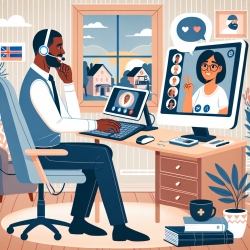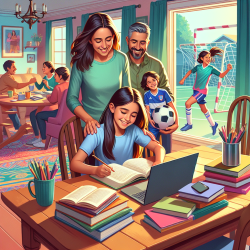In the ever-evolving field of special education, one of the most intriguing and underexplored areas is the impact of bilingualism on children with Down syndrome (DS). The study "Language Learning in Four Bilingual Children with Down Syndrome: A Detailed Analysis of Vocabulary and Morphosyntax" provides invaluable insights that can guide practitioners in supporting bilingual language development in children with DS.
The research by Feltmate and Kay-Raining Bird (2008) delves into the morphosyntactic and vocabulary skills in both English and French of four bilingual children with DS. It compares their abilities with those of typically developing bilingual children and monolingual children with DS. The findings are both encouraging and informative, showing that children with DS can indeed develop functional skills in a second language without detrimental effects on their first language.
Key Findings
- All four bilingual children with DS developed functional second language skills.
- No consistent negative effect of bilingualism was observed.
- Current language input significantly influenced the variability in language skills between English and French.
Implications for Practitioners
For practitioners, these findings underscore the importance of supporting bilingual environments for children with DS. Here are some actionable steps based on the research:
- Encourage Balanced Language Exposure: Ensure that children with DS receive balanced exposure to both languages. This can be facilitated through bilingual educational settings and consistent use of both languages at home.
- Monitor Language Input: Regularly assess the child's exposure to each language and adjust strategies to provide more balanced input if necessary.
- Use Functional Language Activities: Engage children in activities that promote the use of both languages in practical, everyday contexts. This helps in developing functional language skills.
Further Research
While the study provides a solid foundation, further research is essential to understand the long-term impacts of bilingualism on language development in children with DS. Practitioners are encouraged to stay informed about ongoing research and contribute to the body of knowledge through their observations and case studies.
To read the original research paper, please follow this link: Language Learning in Four Bilingual Children with Down Syndrome: A Detailed Analysis of Vocabulary and Morphosyntax.










